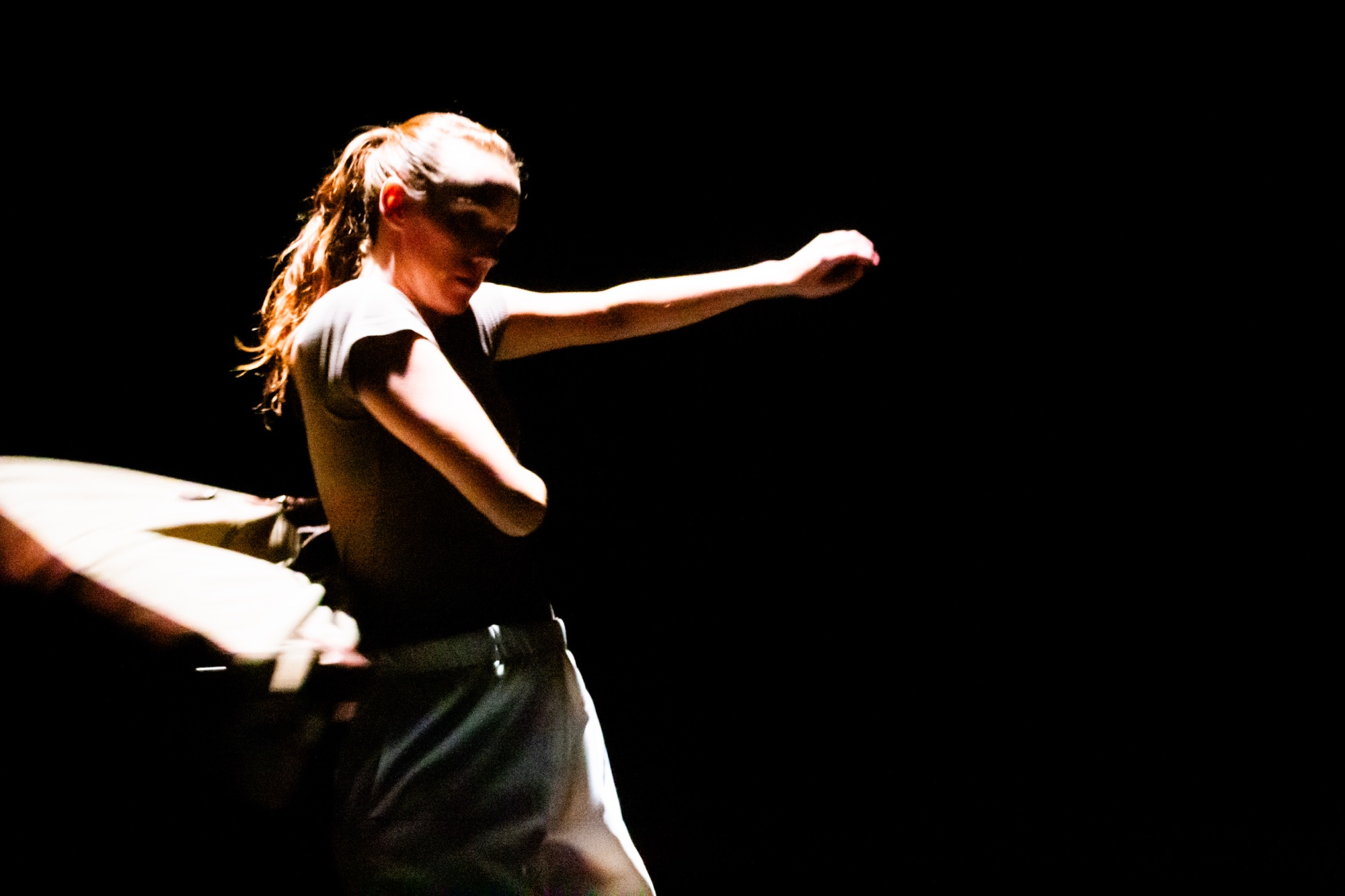Words by Janejira Matthews.
A term increasingly found in mainstream media, Lucy Clark presents Baggage in its most literal and metaphorical sense. Alone on stage at first, she journals in a sketchpad or fiddles with the many leather suitcases scattered around her. From its title, Baggage is exactly what it promises; an unpacking of troubles and burden, yet it is also an examination of friendship, social suffocation and overstimulation.
A disabled artist, Clark’s visual representation of well-meaning friends and flamboyant noise slipping into sensory overload feels personal and honest. Joined on stage by Clea Godsill, the pair whirl and fall through a friendship lined with support, fun and frustration. Donning costumes on – for Clark, a polka dot dress yanked and wrestled over her brown shirt and white shorts, and a pair of pink trousers and striped waistcoat effortlessly slipped on for Godsill – the two tap cheerily, exchanging rhythms and meeting in perfect synchrony. A dance form usually dominated by male artists, watching two women duet with skilful ease is empowering.
The happiness, however, is short-lived with Godsill’s role as a friend proving nuanced and complicated as the work continues. Godsill hands bags to Clark, piling them up until her face is obscured by suitcases. Still trying to tap, Clark’s feet become unsure, one foot stammering on the floor as she desperately holds up the baggage. It’s a surreal image, as if the bags and Clark have morphed into one, with a pair of tap shoes sticking out the bottom.
Understandably, she drops the bags in annoyance. Baggage is unhesitatingly real in exposing its contradictions of human relationships; one moment, fizzing with dopamine, the next, fed up with each other and teetering on the edge of understanding. Sometimes, Godsill is too invasive and too loud as opposed to her joy-bringing persona. The duality is natural, its organic nature gradually building as Baggage progresses. Earlier irritations come across slightly too forced, but lose their artificial quality as Baggage begins to expose an internal world of social fatigue.
As for the contents of the baggage itself, Clark is withheld, presenting someone fun-loving but private. In her sketchpad, she writes ‘DO NOT OPEN’ before tearing the page out and sticking it deliberately on a suitcase. There is no hint at a specific secret. Rather, Clark leaves plenty of room for audience interpretation. What is eventually pulled out of the forbidden suitcase is a white bedsheet. Covering Clark, her silhouette is a grey blur beneath the sheet. Air puffs the sheet up as her hands reach outwards, then is expelled as the material ripples and pulls down to squeeze out whatever space lies between Clark and the sheet’s surface. She gradually descends to the floor, the sheet closing up around her in a claustrophobic embrace. Her hand reaches out from underneath, wielding a black marker to draw a smiling face atop the sheet – a mask. Just how many masks do each of us wear a day, and who knows what baggage lies beneath?
Brave in revealing an emotional inner world, Baggage refuses to shy away from acknowledging hardships often hidden from everyday view.
Header image by Lara Marino.
